At each transition along Her Odyssey, we are confronted with shifting seasons and uncharacteristic weather events. Winter comes later and so does Spring thaw. Summer bakes hotter and Autumn yawns long. Frosts hang around later into the year and the “odd freeze” or record breaking high are no longer odd and new records are being set at an accelerating rate. Our fellow migrators, the butterflies, birds, and bees, like the farmers, are already well aware.
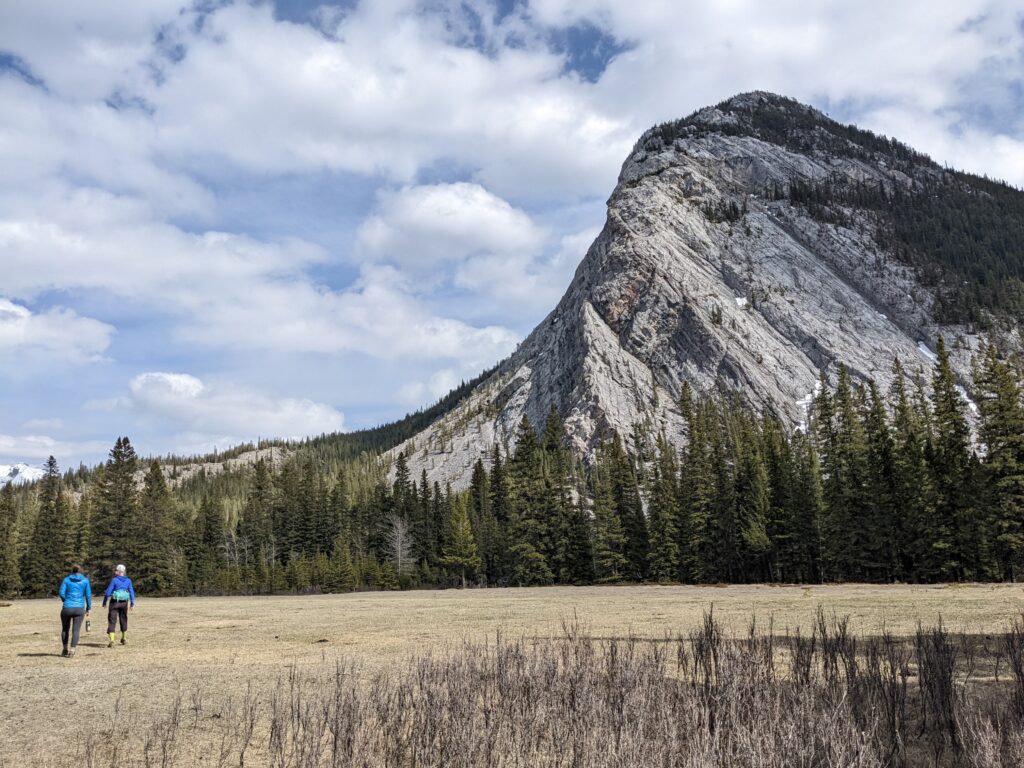
I reflect back to when we began, walking onto Marcos and Diana’s estancia in the Magallanes Region of Chile. I remember their resiliency, grit, and due pride in their capacity for independence. They commented on how things started shifting 20 years ago but noticed it accelerating 5 years ago, a story we would hear echoed time and again in the years ahead.
“Ya no dan fruta,” Diana said of the raspberry bushes and bean vines in her garden.
[They no longer produce fruit]
Marcos called it “the Pisco Sour Effect.”
Pursuing ultra-endurance travel through a climate crisis and 6th mass extinction (referred to as the Holocene or Anthropocene Extinction) is a matter of threading a needle. It is increasingly difficult to predict the pattern of seasons.
Fortunately, we acknowledged this early on and set a framework to allow for adaptations in our pursuit, such that we can move with the changes (for example, hiking the Great Divide Trail southbound last year and maximizing on the temperate autumn stretch). I believe this will become an increasingly valuable tactic for long travelers.
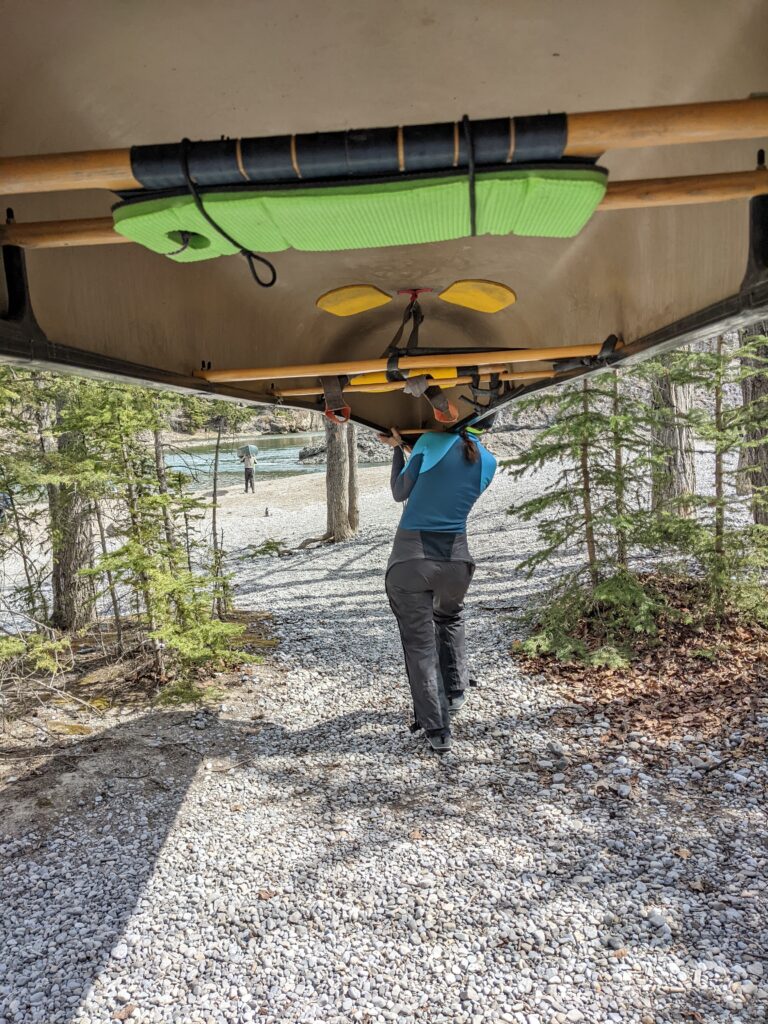
This season in the Canadian Rockies was no exception. Brian Castner’s 2016 write up of paddling the Big River*, ‘I Canoed to the Arctic Ocean and What did I find? A Balmy Beach’ talks about the heat, the thawing ice houses, the swamps, and writhing coastlands. This year, while we were out on the water, new heat records were set and locals referred to old acquaintances like the North Wind, as having become “confused” in the last 5 years. It was strange to realize that now when locals talk about “in the last 5 years,” they are referring to a time we were already setting soles to soil.
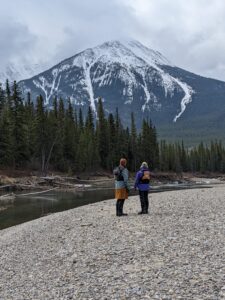
We arrived to Banff in late April, well before breakup would happen on the bigger rivers. This year it came about on May 9, and did serious damage in Hay River, one of our planned resupply points. This information only furthered my cataclysmic anxieties.
We had expected to have a couple weeks to prepare gear, do a bit of training, and put in when the snow melted out of the mountains. TA Loeffler’s team had launched in mid-May and I had hoped for the same, such as to give ourselves plenty of time to get off the water before paddling into Autumn Arctic Storms.
All things being what they are, it was a chilly, tardy, Spring.
Tour Guide and Wife Tracker generously shared their home with us for the almost 5 weeks of preparation and waiting. Keith and Heather diligently took us under their wing on the water. These four people were ballasts of our tenure in Canada.
We were spoiled by conducting our boat training on the Bow River. The river derives its name from the reeds which grow along its banks, the Blackfoot called it Makhabn, meaning ‘river where bow reeds grow’. Keith wasted no time in getting us out there. A foundational premise of his teaching was that we needed as much time on the water as possible. His second fundamental note was, “keep the pointy end downstream.”
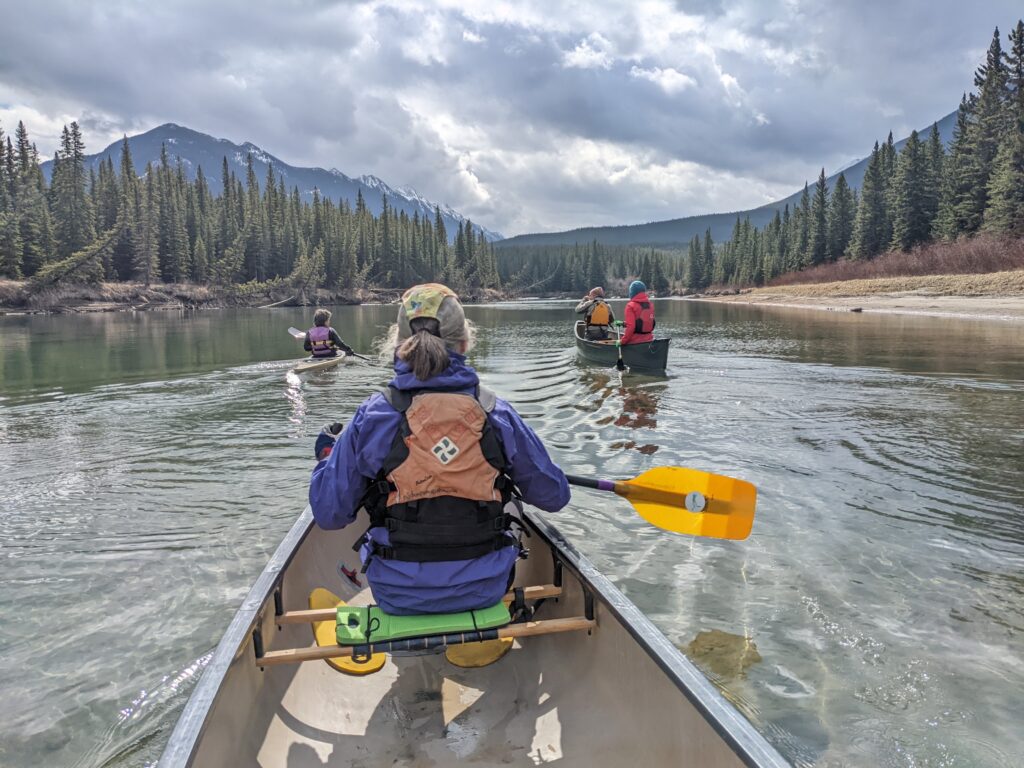
I would hazard that we were some of the first folks out on these popular stretches and we were out there every chance we got. Over the following weeks, we paddled past the summer canoe rental companies training their staff, the osprey selecting their nests, and the geese laying eggs. We learned to layer for temperatures on the water, not for land.
We began with paddling the slow, azure stretches in Banff, up and down stream, practicing skirting the banks and learning to feel current, which would end up being one of the primary reading skills. One nifty tool I would later learn from Leonard Masuzumi of Fort Good Hope, is to fill a plastic soda bottle half way up with sand and, tying this to a string, let it float out in front of your boat. It will lead you to the current.
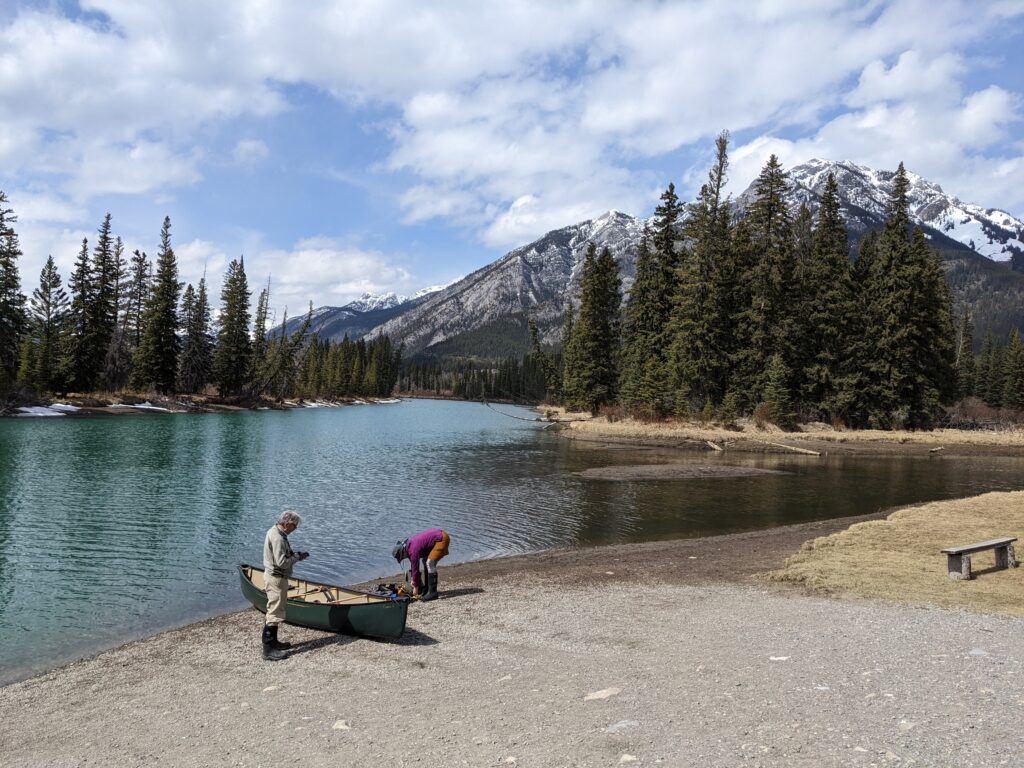
As it were, we were learning to read the banks, that the current is where the bank is cut deeper. Also gaining experience in the gambit of whether to cut corners around bends. Another of those trending lessons is that shortcuts have a way of making things take longer.
Keith taught us the J stroke, draws, pries, and how to brace. Some of it carried over from our months in kayaks, some of it did not. Somehow, tucking our legs away, folded under our seats was a distracting sensation. Nor were our arms sure what to think about being primary players all of a sudden!
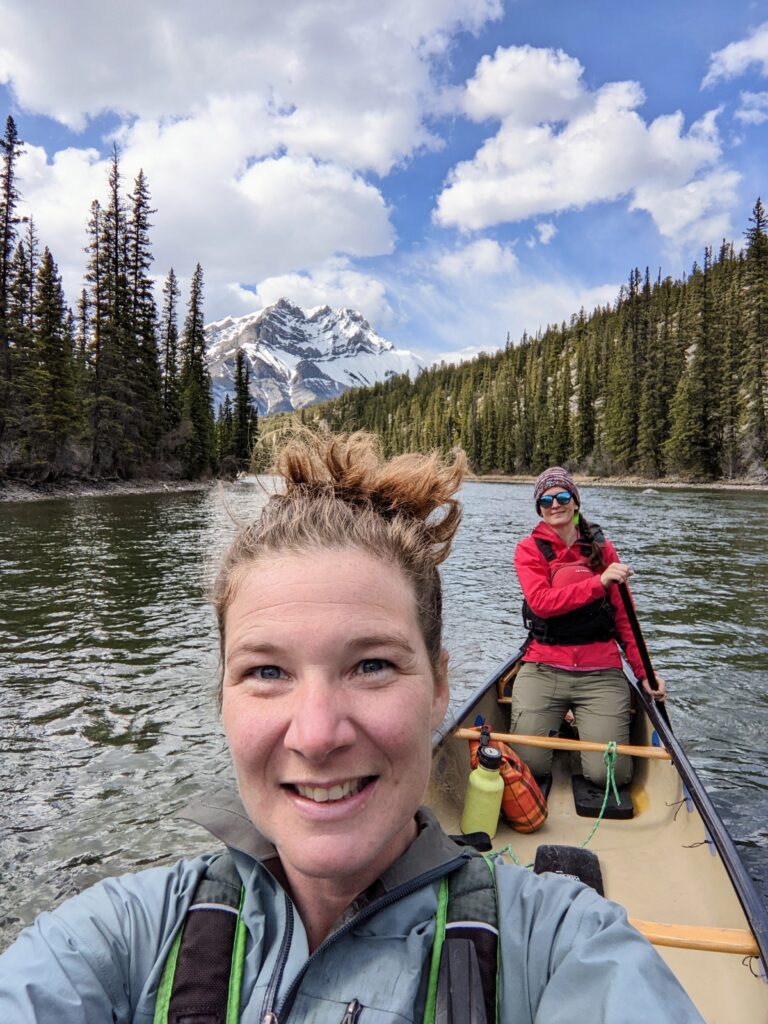
All of it felt like reading a new language that uses the same letters. Neon and I quickly settled into our niches, which aligned with how we each work both mentally and physically: Neon at the stern and I in the bow.
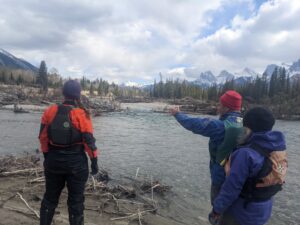 We practiced scouting and running a few rapids. Timing our actions to the pace of the water and aiming for the bottom of the Vs in the white water. Neon had a knack for this, her powers of observation and patience are expansive and have been a critical resource throughout Her Odyssey. Her subtle delight was invigorating and confidence boosting for all of us.
We practiced scouting and running a few rapids. Timing our actions to the pace of the water and aiming for the bottom of the Vs in the white water. Neon had a knack for this, her powers of observation and patience are expansive and have been a critical resource throughout Her Odyssey. Her subtle delight was invigorating and confidence boosting for all of us.
We mostly ran a stretch downriver from Banff, because the water was still too low higher up and the cool temperatures and overcast weather were keeping the snow in the mountains. I was daily checking the Water Service charts and extended weather forecasts for trends but the levels undulated well below average for this time of year.
Eventually we began paddling the full stretch from Banff to Canmore. I was easily mesmerized watching the shadow of the boat flitter over the smooth river rocks below. How the ripples from our paddle strokes refracted into arches of light on the river bottom. There is serenity and treachery about water and it creates a heady sort of presence which I was dizzied to move upon.
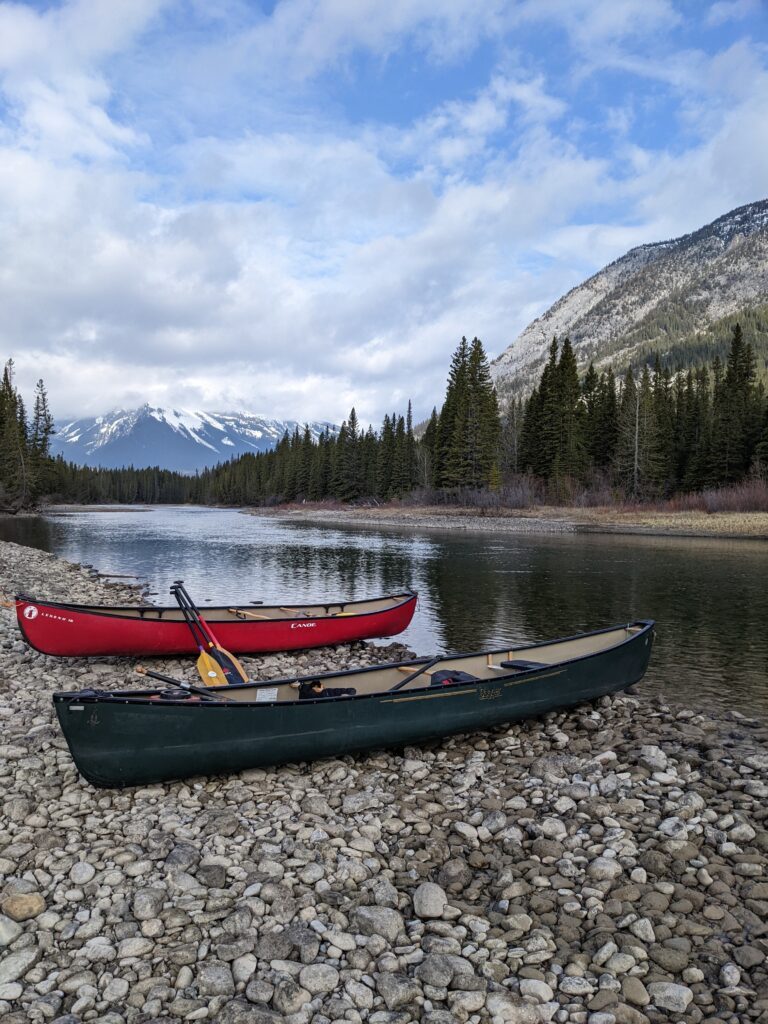
During a bout of windy weather, we retreated to Keith’s Garage and drilled 48 holes into the side of our canoe. Bruce and Marline Bembridge had generously loaned us their canoe spray deck (also sometimes called a skirt), a tool which would help to keep water from swamping the boat when we were on the large bodies and contending with waves. We were drilling into the boat to make points where we could affix the spray deck to the boat. With a few experimental adaptations involving Dyneema cordage, clips, various 2 part epoxies, and cutting and scuffing up an old toboggan, we were in business.
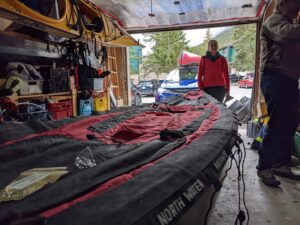
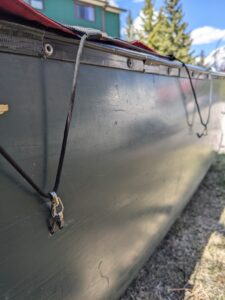
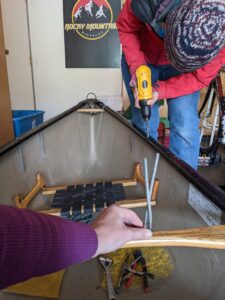
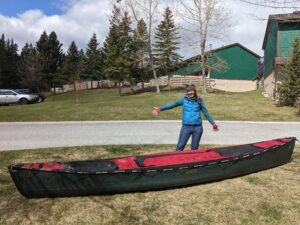
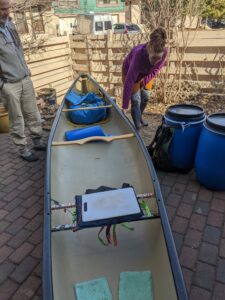
Another of my favorite Canadian characteristics to our boat was a heritage from Buckey. The front (bow) seat had been no good, so he advised Keith on how to employ hockey sticks and a cutting board to fashion a new one.
The presence of those who have passed on has been steady company on this endeavour. While we’ve been out here I’ve had friends and family die in the mountains, by their own hands, by illness, and by age. Loss is not lost on me.
Nor is the imperative to keep them present by story telling and acknowledgment. All this may sound rather heavy and serious but I assure you, the dead have a droll humor and I chuckled often to think about a man I’d just missed meeting, every time I set my hinny on a garden kneeling pad, elasticed to a cutting board screwed to hockey sticks.
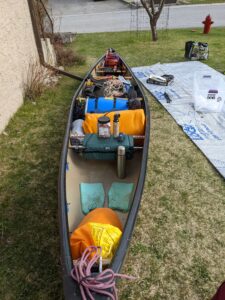 Beyond adapting the boat itself, we were about the business of practicing loading it and figuring out weight distribution. Most of our on water practice with this involved carrying squirmy human luggage who got us roaring like pirates, kept popping up to see what was ahead, and helping to pass the slow, flat stretches with riveting stories. Keith’s adventures reminded us that the drive of wonder and curiosity in the Spirit of Adventure has been long standing, even as safety practices, access, and methods have developed at an astounding speed.
Beyond adapting the boat itself, we were about the business of practicing loading it and figuring out weight distribution. Most of our on water practice with this involved carrying squirmy human luggage who got us roaring like pirates, kept popping up to see what was ahead, and helping to pass the slow, flat stretches with riveting stories. Keith’s adventures reminded us that the drive of wonder and curiosity in the Spirit of Adventure has been long standing, even as safety practices, access, and methods have developed at an astounding speed.
One of the major logistical hurdles we faced was how to contend with the 300 km stretch between Athabasca and Fort McMurray. It is a rocky, narrow canyon run, which always means prospects of rescue should be anticipated to be limited and delayed. There was one definite portage (Grand Rapids) and then a succession of grades III and higher. Consulting with Keith, Arno, the guidebooks, and historical records, they all backed up my instinct that it was beyond our skill level and highly risky tackled alone.
Fortunately we had also hauled our bicycles up in anticipation of this. The logistics around this transition were impossibly daunting, until Arno and Elaine appeared in our world. They offered to store and shuttle our bikes, Neon’s car, and our excess gear. But by the grace of trail angels such as these do we forge forward.
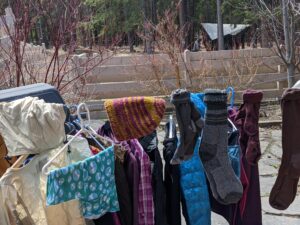
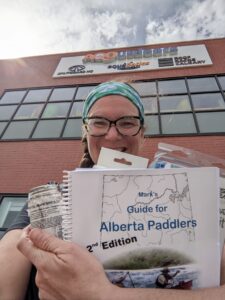
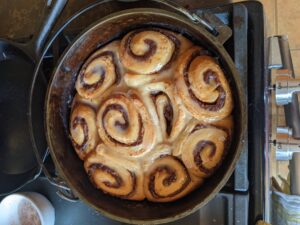
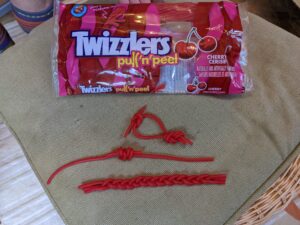
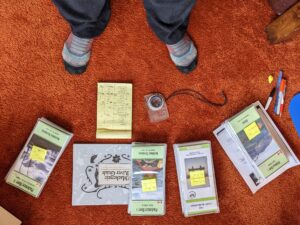
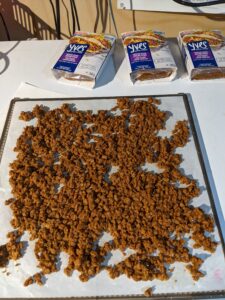
The final area of preparation afoot was food planning. This was something Neon had taken on and most evenings she could be found draped in her Honcho Poncho, sitting on her camp chair in the basement, sorting and weighing food. I figured out mail drop points, shipping options, and estimated arrival dates. We had factored for two pounds of food per person, per day. We had opted to ship our food rather than purchase along the way due to nutritional concerns and periods of lack which have characterized some of the previous stretches. We were also quite excited by the prospect of eating food that we did not physically have to carry! IE- we could bring canned goods.
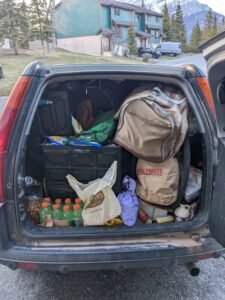
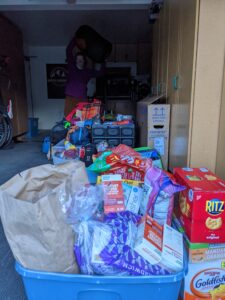
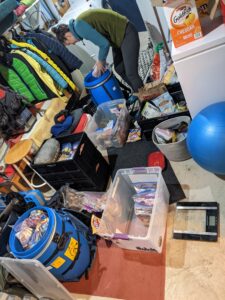
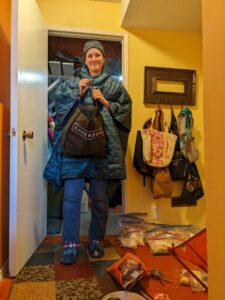
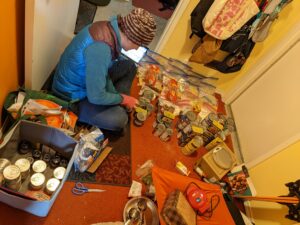
Neon had created a spreadsheet and done some major shopping hauls on her way through Montana. We’d broken up caloric intake throughout the day to 3 meals and consistent snacking. It would become a practice on the water that I would call out “snack and switch” every hour and we would trade sides we were paddling on and eat about 100 calories.
She had planned 4 or 5 varieties of dinners consisting of grains such as quinoa, couscous, tortellinis (which, in our private language we referred to as torts. Except if it was around lunchtime, when obviously we were referring to tortillas.) One of our biggest discovery delights in this area were the Thai Kitchen pastes and sauces. Mixed with a can of coconut milk, a handful of dehydrated veggies over one of the grains and we were eating like queens!
We brought mashed potato as a thickener, or a quick dinner alternative. She also brought about 20 dehydrated bagged meals (4 in each 25 day resupply), for days when we had to eat on the go, switch lunch and dinner, or when weather would make it difficult.
Lunches stayed largely the same as when backpacking. Our primary food vehicles were a rotation of torts, crackers, and flatbreads. The passengers were the same: proteins and cheese. The proteins were canned tuna, dehydrated hummus, pepperoni slices, etc. Dried fruit, nuts, chips, and yerba mate complemented the meal.
Breakfast afforded us more variety than we’ve previously known. Granted that most days, we were trying to get on the water as quickly as possible so Neon would overnight soak a Talenti container of mixed oats and grains. I, in my aversion to having to chew first thing in the morning, stuck with a mix of Nido and Carnation instant breakfast. Granted, this meant I usually started munching on bars earlier than she did but in turn I did not have to go through the experimental phase of learning that the grains and raisins both start fermenting when kept in a hot little tub for a couple days.
For weather days, we brought pancake mix, dehydrated hashbrowns (one of the most ingenious developments for on-water eating!), and tried out some sort of vegan egg white alternative which, in all aspects, resembled boogers and was quickly abandoned.
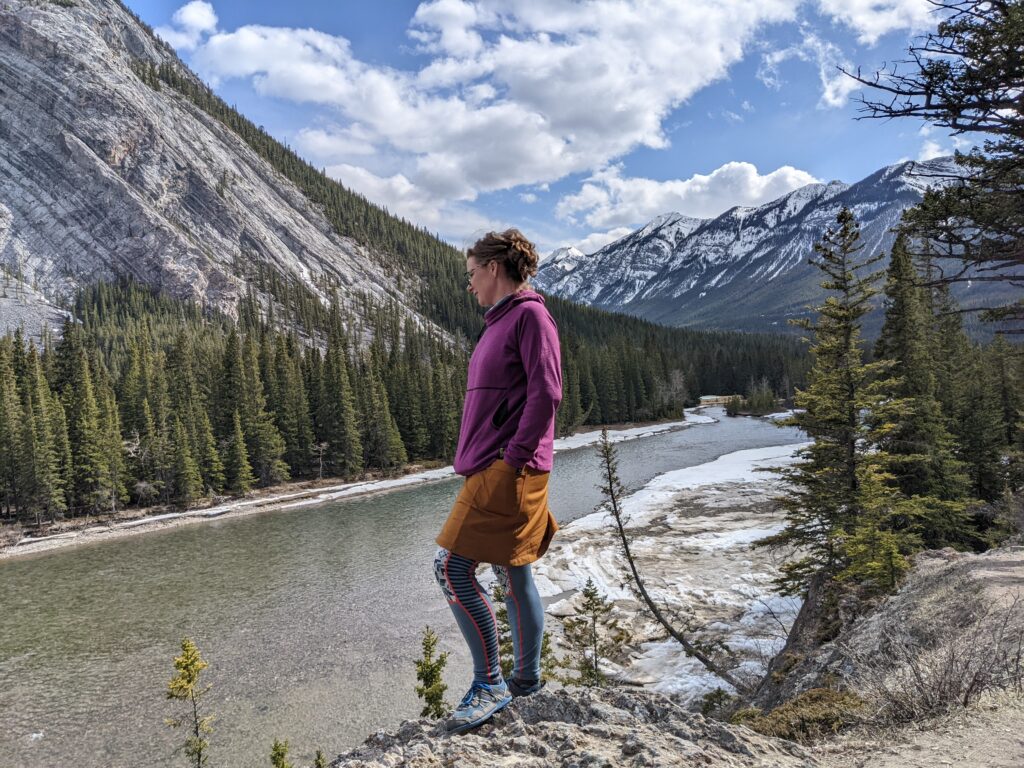
As the spring dragged on and prospects of a mid-May launch date came and went, I entered that wringing phase of mounting anxiety. Of physically feeling like I could not wait another day. That I’d burst out of my skin into the form of some anadromous fish or sprout wings of a tern and just follow the call and deal with what came.
Instead, I remained human, albeit a tistchy one, and practiced my least favorite lesson: patience. The rewards balanced the anxiety. We were delighted when Keith and Heather offered to begin the paddle with us and eventually we were referencing the 3 day forecast rather than the 11 day. Once the May Long Weekend and summer park crowds had cleared out, we would put on.
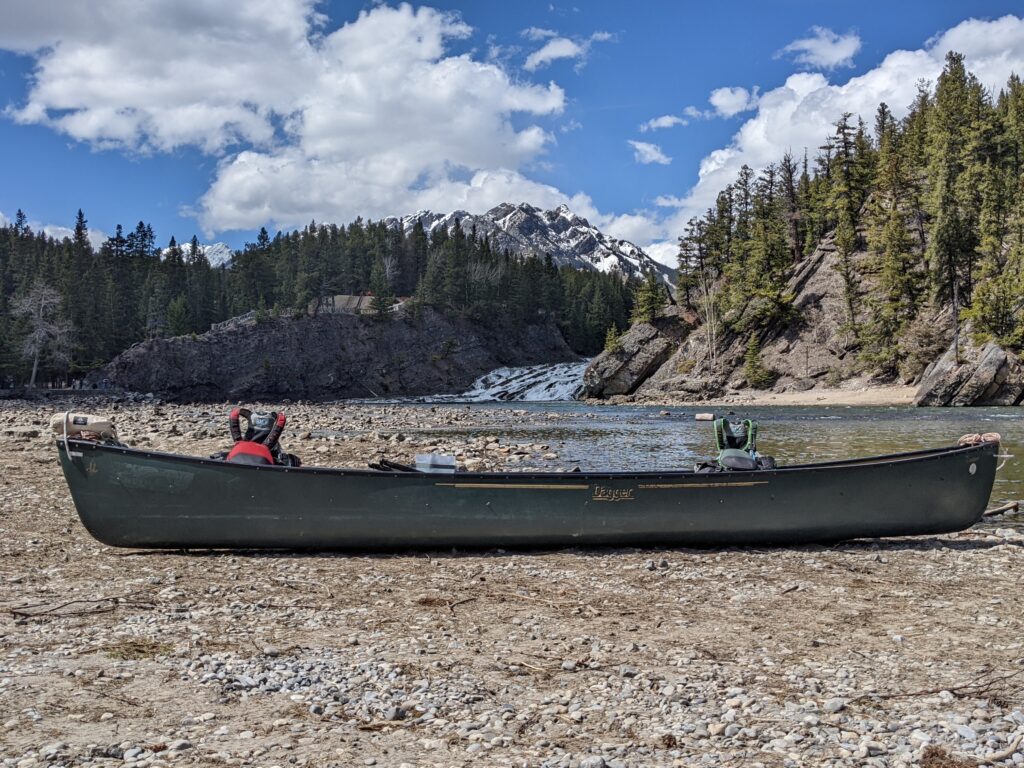
Author’s notes:
*‘Dehcho’ is the Dene name for what is known more widely as the Mackenzie River. For this blog going forward, I will refer to it as The Big River.
________________
A final note for those of you who read all the way through and particularly those who have been with us over the years, I would like to volunteer an explanation of the tardy release of these blogs:
For the first 3 years of Her Odyssey, I worked diligently to produce a weekly blog and Neon would pitch in a piece every couple weeks to further help distribute the load. MLE would edit and schedule, and Henry would translate. Their presence and commitment gave me the accountability and confidence to show up.
Entering the 4th and 5th years I was on my own for creating blogs and began juggling writing also for our Patreon patrons and exploring the different tactics recommended by digital creators, such as vlogging my CDT thru-hike. It has been Will of Outer Cape Web and Graphic Designs who has diligently kept this page running. He helped me visualize and maintain this add free space for you to enjoy reading.
Balancing covering ground, keeping ourselves safe and fed, creating content, and finding and paying for internet access to upload that content is a busy load to balance. Remote Canada is expensive, so it was not conducive to dally around places with internet connection.
In recent years, I’ve navigated the same channels of crisis as many of you. In the weeks leading up to launching this final stage I weighed heavily whether I could show up on all fronts: To be present for the journey and to share it. I prioritized focusing on recovery and celebration.
Finally, I also will offer this more personal matter: aspects of my childhood roles and experiences were roiled up in our time in Central America. The framework of being a missionary kid was deeply restructured by traveling north, into lands and among people also deeply shaped and marred by missionaries.
All of these factors combined told me that this is not something to be hurried into production. It is to be felt and considered and moves first through muscle, tears, sweat, sinew, and private writing. So, I gave myself permission to leave my beat up little tablet in storage. I focused on taking down notes and enjoyed filling journals.
A part of my brain still shouts that I let you all down by doing this. I have also learned that part of my brain will always find something by which to erode my confidence.
That said, creating a chronicle freely available for public consumption, to educate and connect, is a critical aspect of the work I have chosen. So, I compromised and let myself live the experience and will now, with fresh retrospection, catch you up on what happened out there on the water.
I will be imperfect in this. Sometimes it may be uncomfortable for you. I feel badly for that and also, I do not apologize. I honor and acknowledge those of you who show up all the way through anyway. Your receptivity makes this worth my time and effort.
Gratefully,
Fidgit/Bethany






Comments (2)
I consider your posts a gift. Each morsel is to be savored, no rush, because we are just guests. Thank you!
Thank you for showing up in this way, I needed to hear it. They are labors of love and passion and I like to regard them as my offerings from the abundance I am dealt. <3